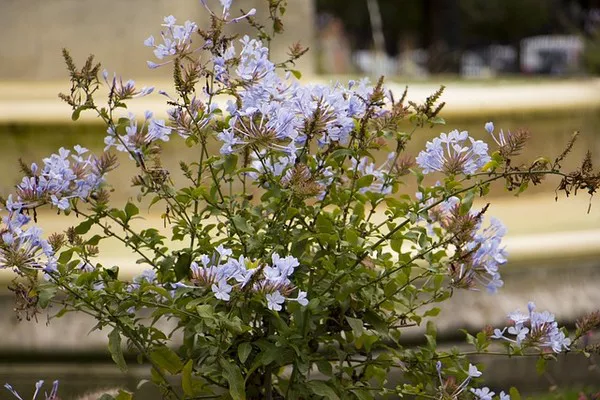Whiteflies are notorious pests that can wreak havoc on your beloved plants, whether you’re tending to a flourishing garden or nurturing indoor greenery. These tiny, sap-sucking insects not only damage plants by feeding on their juices but also spread diseases that can further harm your garden’s health. Fortunately, there are several strategies you can employ to get rid of whiteflies and protect your plants from their destructive presence. In this article, we will explore various methods for managing whiteflies effectively.
Understanding Whiteflies
Whiteflies are small, flying insects belonging to the Aleyrodidae family. They are typically white or pale yellow and measure about 1/16 to 1/10 inch in length. These pests are most commonly found on the undersides of plant leaves, where they lay their eggs in a circular pattern. Whiteflies feed on plant sap by piercing the leaves and stems with their needle-like mouthparts. In addition to causing direct damage by sucking the plant’s nutrients, they also excrete a sticky substance called honeydew, which can attract ants and promote the growth of sooty mold on plants.
Whiteflies are prolific breeders, with each female capable of laying hundreds of eggs during her lifetime. This rapid reproduction cycle makes them a formidable pest to combat. However, with the right strategies and persistence, you can effectively manage whitefly infestations.
Inspection and Early Detection
The first step in managing whiteflies is to regularly inspect your plants for signs of infestation. Pay close attention to the undersides of leaves, as this is where whiteflies prefer to feed and lay their eggs. Look for the following indicators of whitefly presence:
Yellowing or wilting leaves: Whitefly feeding can cause leaves to turn yellow, wilt, or become distorted.
Sticky residue: Check for the presence of honeydew on the leaves. This sticky substance is a clear sign of whitefly activity.
White, winged insects: Adult whiteflies are small, white, and have powdery wings. If you see them flying around your plants, it’s a clear sign of infestation.
Tiny, oval eggs: Whitefly eggs are tiny and usually found on the undersides of leaves in circular clusters.
Early detection is crucial for effective whitefly management, as it allows you to take action before the infestation becomes severe.
Cultural Control Methods
Several cultural control methods can help reduce the risk of whitefly infestations and limit their damage:
Pruning: Remove heavily infested leaves and stems to prevent the spread of whiteflies to healthy parts of the plant.
Proper spacing: Ensure that your plants are adequately spaced to improve air circulation, which can deter whiteflies.
Weed control: Remove weeds in the vicinity of your garden, as they can serve as alternative hosts for whiteflies.
Companion planting: Some plants, such as marigolds and nasturtiums, can act as natural repellents for whiteflies when planted alongside susceptible plants.
Natural Predators
Encouraging the presence of natural predators in your garden can be an effective biological control method for whiteflies. Some beneficial insects that feed on whiteflies include ladybugs, lacewings, and parasitic wasps. To attract these predators:
Plant nectar-rich flowers: Nectar-producing flowers can provide food for beneficial insects and encourage them to stay in your garden.
Avoid using broad-spectrum pesticides: Pesticides can harm both harmful and beneficial insects, so use them sparingly and only when necessary.
Insecticidal Soap and Neem Oil
Insecticidal soap and neem oil are effective options for controlling whiteflies on your plants. These products work by suffocating the insects and disrupting their feeding habits. When using insecticidal soap or neem oil:
Follow the manufacturer’s instructions for application and dilution.
Apply the solution directly to the undersides of leaves, where whiteflies are most commonly found.
Repeat applications as needed, typically every 7-10 days, until the infestation is under control.
Yellow Sticky Traps
Yellow sticky traps are a simple yet effective way to monitor and control whiteflies. These traps are bright yellow in color, which attracts whiteflies, and are coated with a sticky adhesive that captures the insects when they land on them. Hang the traps near your plants, particularly in areas with known whitefly activity. Replace the traps as they become covered with insects.
Systemic Insecticides
Systemic insecticides are absorbed by the plant and provide long-lasting protection against whiteflies. These products are typically applied to the soil or taken up by the plant through foliar application. Systemic insecticides work by poisoning the whiteflies when they feed on the plant’s sap. However, exercise caution when using systemic insecticides, as they can also harm beneficial insects and should be used as a last resort.
Conclusion
Whiteflies can pose a significant threat to your plants, but with a combination of early detection and the right control methods, you can effectively manage infestations and protect your garden. Regular inspections, cultural control methods, natural predators, insecticidal soap, neem oil, yellow sticky traps, and systemic insecticides are all valuable tools in your arsenal for whitefly management. By implementing these strategies and staying vigilant, you can ensure the health and vitality of your plants while keeping whiteflies at bay.


